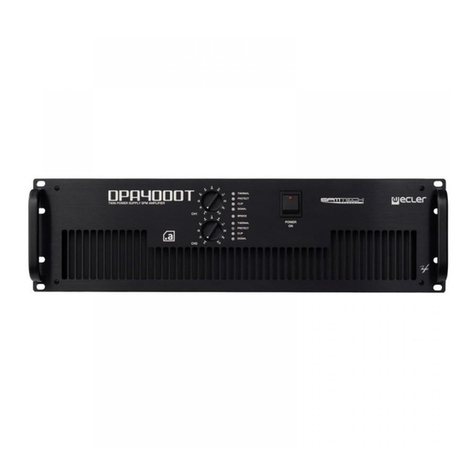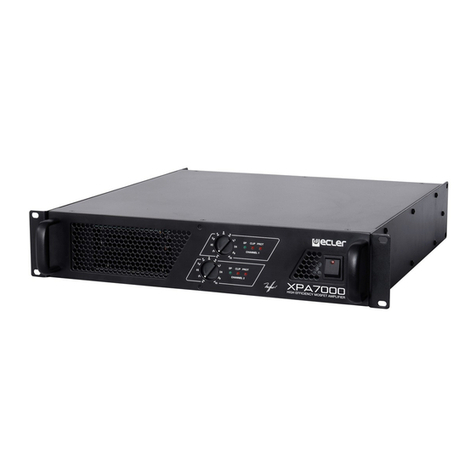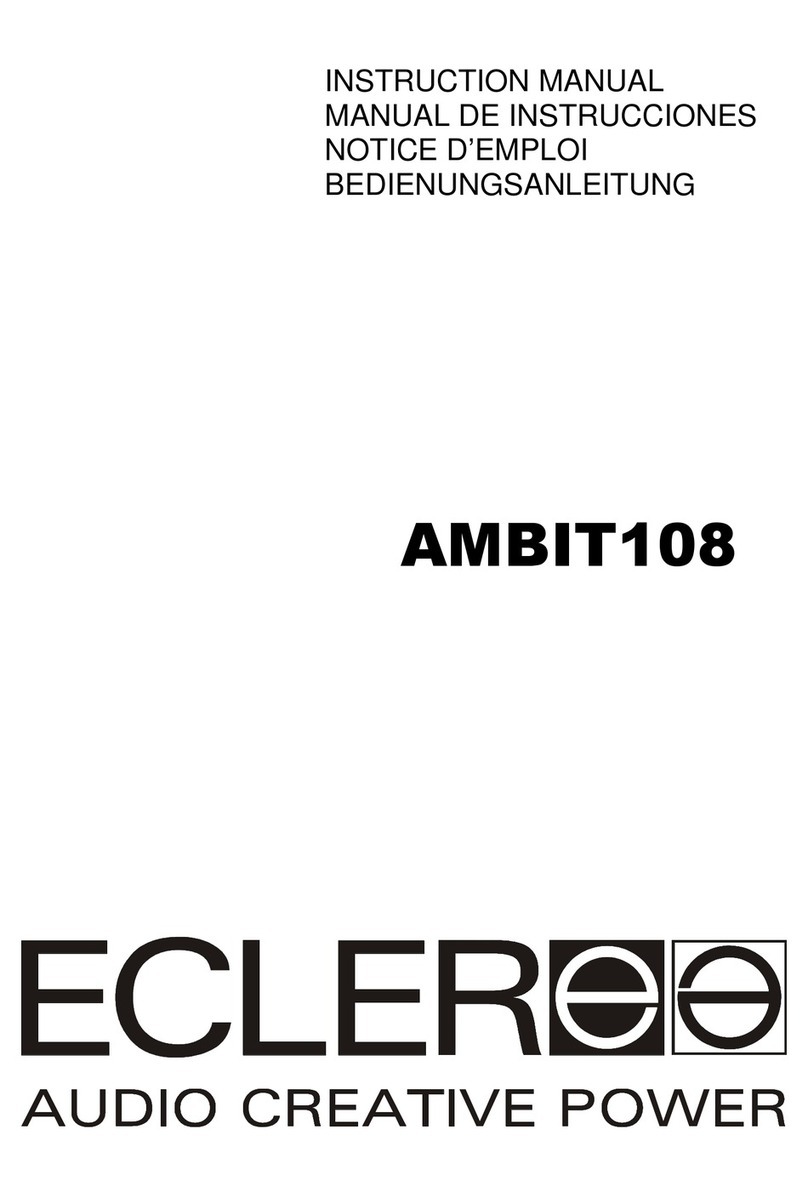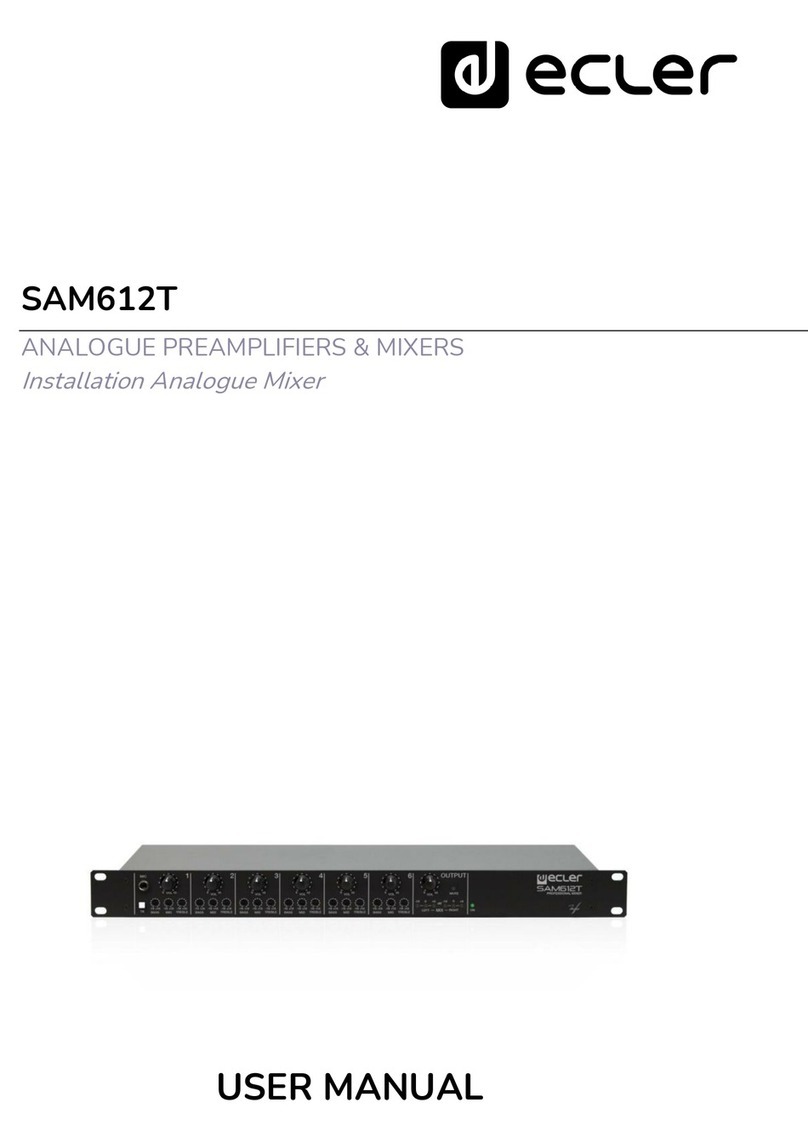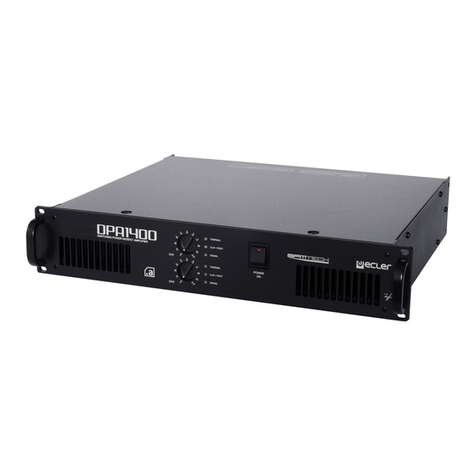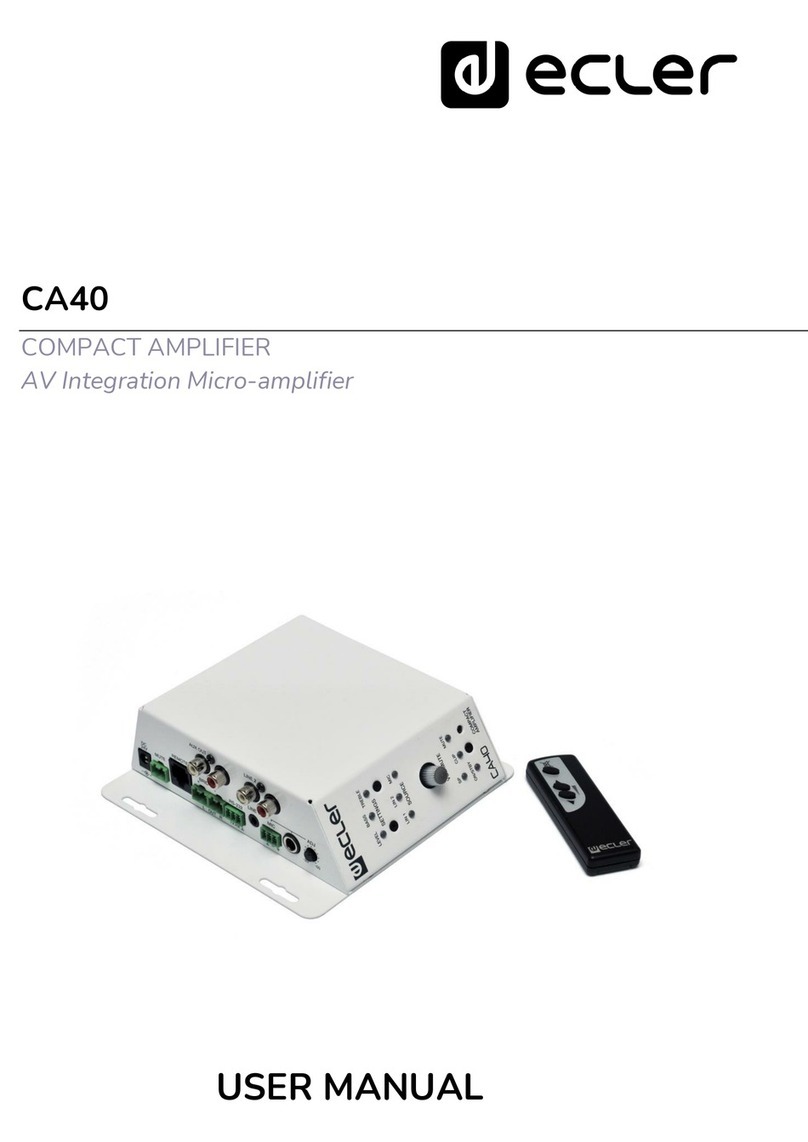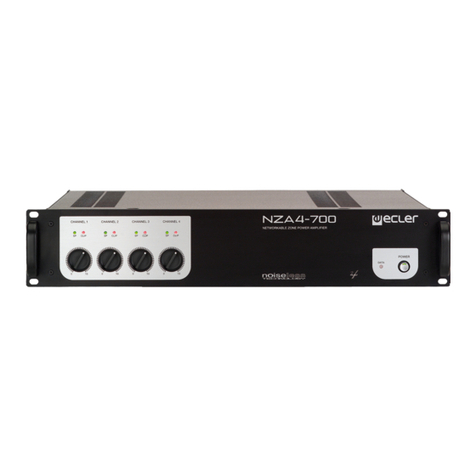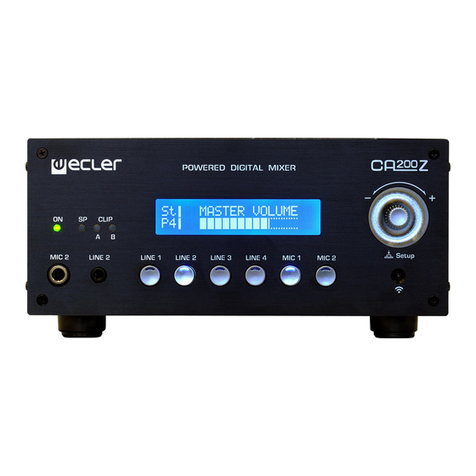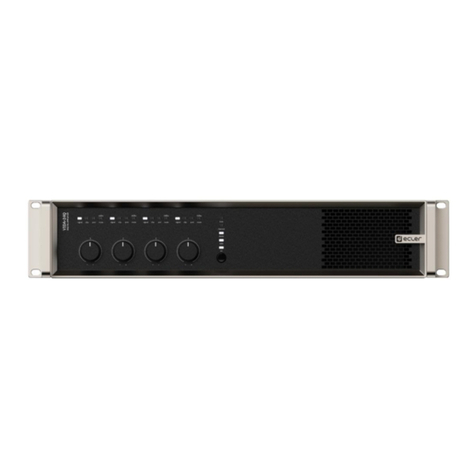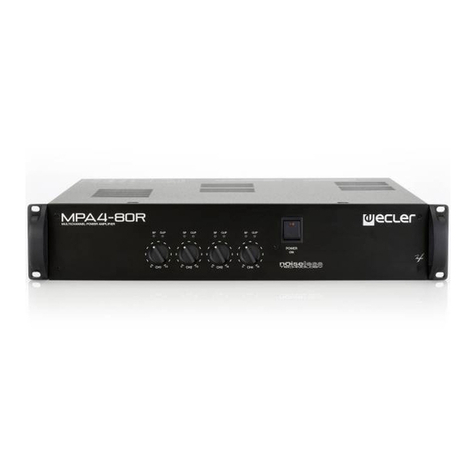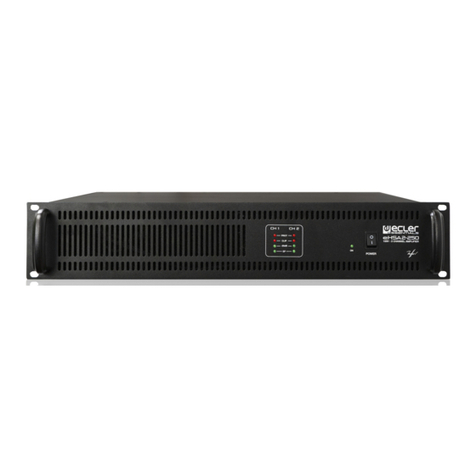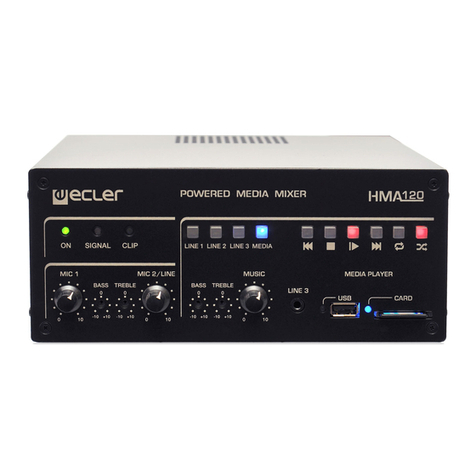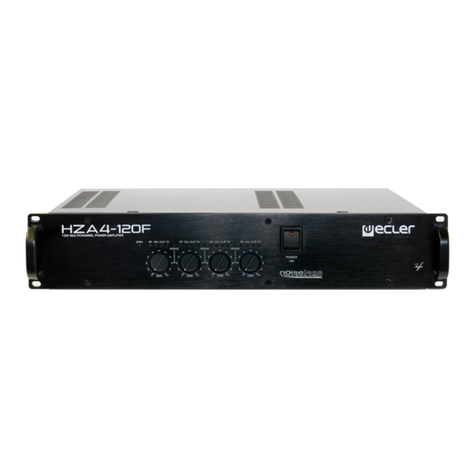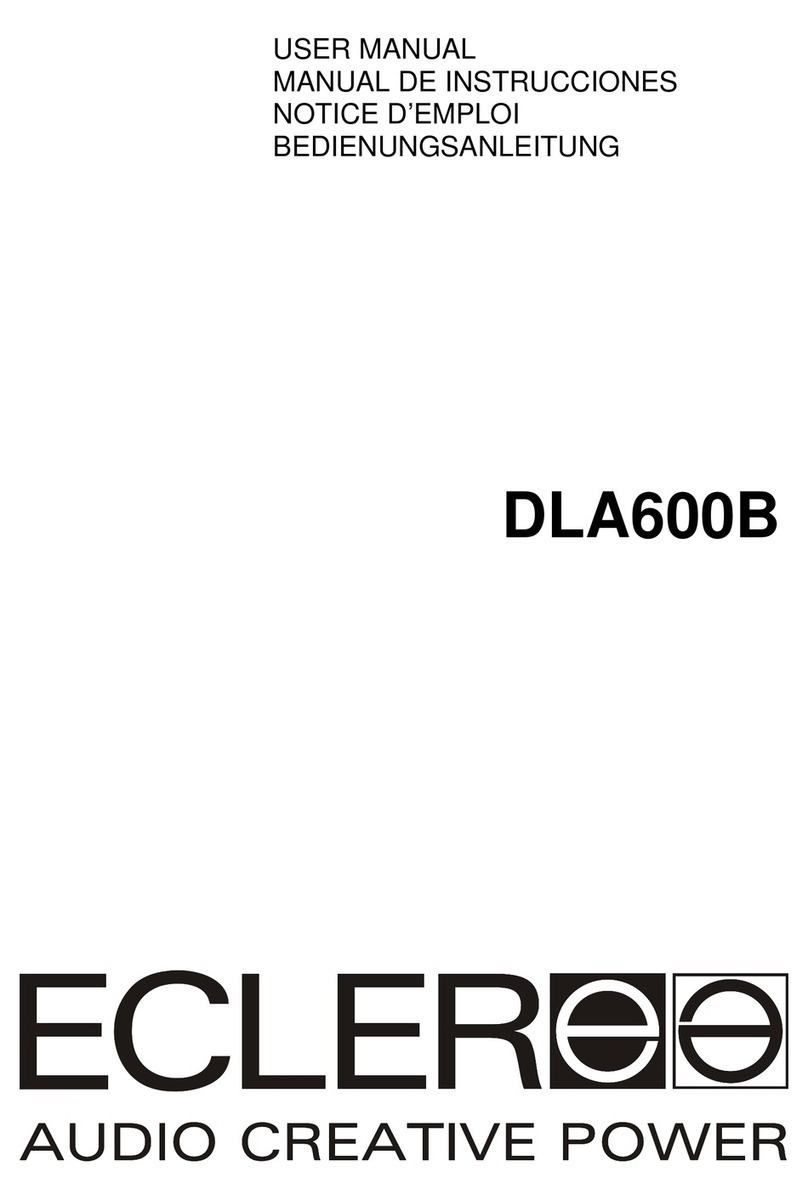
Transistors Q111 and Q112, and their corresponding twins at the lower branch, form
acurrent-buffering circuit wich allows afast charge and discharge of the power
MosFET's gates.
The Zobel circuit, aresistance-capacitance-inductance formed network associated to
the amplifier's ouput, tries to keep the amplifier's output load impedance constant no
matter wich load value is conected to the output, or wich frequency is processed, in
order to avoid phase shifts on the feedback signal.
To avoid the presence of DC voltage on the output, adiac-triac based system is used,
wich shorts the output to signal ground in case the DC level reaches the diac's
triggering value. To avoid this to happen when processing correct signal (sine
waveform, music...), the diac obtains its reference level from afiltering network formed
by a 100K resistor and a 1mF capacitor.
The protections circuitry overhauls the MosFET's power consumption. Basically, this
circuitry consists of two important sections: MosFET's Id current monitoring, and
MosFET's Vds value detection.
When the MosFET's Id level rises above acertain level, transistor Q119 (controlling
transistor) conducts and decreases the BF transistor's loading resistance, thus reducing
also their gate-source voltage and, finally, lowering the Id current value. This system is
helped by adelayed performance, due to the associated circuitry to Q145 and C174.
This capacitor starts to charge when acurrent level above the allowed value is
detected, and the protection starts. The greater is the capacitor's charge level, the
higher is also the voltage applied to Q119 controlling transistor's base, increasing its
conduction and, consequently, reducing the gate-source voltage and thus the Id current
value. This system uses afeedback network. The delay used is necessary to avoid
clipping the processed signal's dynamic range, wich should result in the typical clipping
noise. In the negative branch, the protection circuitry is associated to control transistor
Q120.
In case the overcurrent is not ocassional, and persists, after aperiod of time between
4and 10 seconds (determined by R142 and C124), the system switches back to
by mode, due to asystem-reset. This is done by an optocoupler (IC113) associated to
the negative branch protection circuitry. When protections get activated, IC113
gradually charges C124 untill a40106-type Schmidt trigger gate switches over .If the
problem persists, this cycle is repeated.
STANDBY CIRCUITRY.
This circuit maintains the Output shutdown relay closed for about 10 seconds, and
thus annulates any current through the MosFET's during this period, just untill the
whole system's power supply voltage reaches its stable level. By this system, we avoid
to hear through the loudspeakers any possible annoying noise proceeding from the
system's start-up.
52-0010-0100 EP04-99 Anglès.xls 2 of 3
